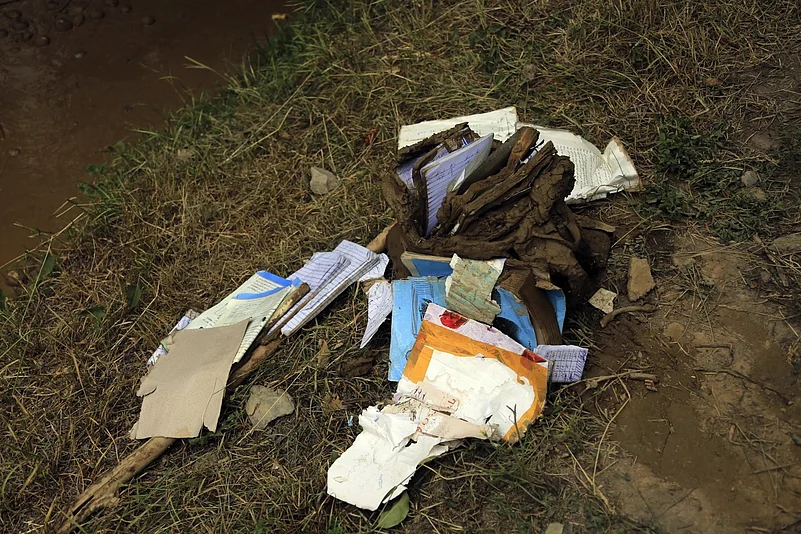More than 300 people were killed in flash floods from unusually heavy seasonal rains in Afghanistan while over 1,000 houses were destroyed, according to the UN food agency.
Heavy rainfall pounded five districts in the province, with warnings that the death toll could rise. Images on social media show devastating scenes of torrents of water sweeping through houses in several villages, leaving a trail of destruction behind.
The World Food Programme that was distributing fortified biscuits to the survivors of one of the many floods that hit Afghanistan over the last few weeks, mostly the northern province of Baghlan, which bore the brunt of the deluges Friday.
Hedayatullah Hamdard, provincial director of Natural Disaster Management in Baghlan, told AFP news agency that the death toll had risen to 62, mainly women and children.
"The number will probably increase, as we are still searching for missing people," Hamdard said.
In neighbouring Takhar province, state-owned media outlets reported the floods killed at least 20 people.
Zabihullah Mujahid, the chief spokesman for the Taliban government, posted on the social media platform X that "hundreds ... have succumbed to these calamitous floods, while a substantial number have sustained injuries.”
Mujahid identified the provinces of Badakhshan, Baghlan, Ghor and Herat as the worst hit. He added that “the extensive devastation” has resulted in “significant financial losses.”
He said the government had ordered all available resources mobilized to rescue people, transport the injured and recover the dead.
The Taliban Defence Ministry said in a statement Saturday that the country's air force has already begun evacuating people in Baghlan and has rescued a large number of people stuck in flooded areas and transported 100 injured people to military hospitals in the region.
Richard Bennett, UN special rapporteur on the situation of human rights in Afghanistan, said on X that the floods are a stark reminder of Afghanistan's vulnerability to the climate crisis and both immediate aid and long-term planning by the Taliban and international actors are needed.
Videos posted on social media showed dozens of people gathered Saturday behind the hospital in Baghlan looking for their loved ones. An official tells them that they should go and start digging graves while their staff are busy with preparing bodies for the burial ceremony.
Officials previously said that in April at least 70 people died from heavy rains and flash flooding in the country. About 2,000 homes, three mosques, and four schools were also damaged.
Afghanistan is one of the countries most vulnerable to climate change, experts say. A relatively dry winter has made it harder for the soil to absorb rainfall, contributing to the severity of the flooding.
Torrential rain and flooding kill people every year in Afghanistan, where poorly built houses in isolated rural areas are particularly vulnerable.
The country has been hit by unusually heavy rainfall over the last few weeks, with floods killing more than 100 people since mid-April. The main road connecting Kabul to northern Afghanistan is currently closed.
The Afghan authorities and humanitarian organisations are working to provide aid to those affected by the flooding.





















